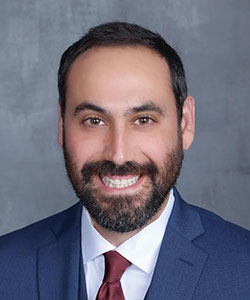Embracing Diversity: The Adequacy and Importance of Cultural Competency Education in Medical School and Residency
Cite as: Pingenot E, Muse IO, George R. Embracing diversity: the adequacy and importance of cultural competency education in medical school and residency. ASRA Pain Medicine News 2024;49. https://doi.org/10.52211/asra050124.005.
The 2020 United States Census indicates that diversity in the nation has increased during the last decade as reflected by a total population diversity index of 61.1% in 2020 vs 54.9% in 2010.1 Physicians routinely encounter—and in turn impact—this increasingly diverse population and are expected to deliver meaningful patient-centered care. It is essential, therefore, that healthcare providers be equipped to communicate effectively with patients from varied backgrounds, understand their unique healthcare needs, and provide culturally competent care.
Utilizing cultural competence to optimize healthcare outcomes requires more than simple awareness and acknowledgement of differences in cultural attitudes and norms. The Centers for Disease Control and Prevention’s National Prevention Information Network defines cultural competence as a set of congruent behaviors, attitudes, and policies that come together in a system, agency, or among professionals that enables effective work in cross-cultural situations.2 True cultural competence in healthcare is measurable, manifesting as an empowering force that improves care, reduces healthcare disparities, and enhances clinical outcomes over a variety of cultural contexts. It is a skill and tool that transforms comprehension into action, promoting optimal healthcare for all. In support of this aim, there is an emphasis on integrating cultural competency training into medical student and trainee education. This article explores the adequacy and significance of cultural competency education in medical school and residency.
Cultural Competency Training in Medical Education: Then and Now
To understand the evolution of cultural competency training in healthcare, it is important to understand its origin and development. The civil rights and social justice movements in the 1960s and 1970s exposed existing racial and ethnic disparities in healthcare. United States medical schools began expansion of cultural competency training with the support of the American Medical Association in the 1980s and 1990s.3 In the early 2000s, the Liaison Committee for Medical Education (LCME) and the Accreditation Council for Graduate Medical Education (ACGME) emphasized the need for training in cultural competency in medical schools and other post-graduate programs.4 The LCME introduced a new standard for cultural competency:
Faculty and students must demonstrate an understanding of the manner in which people of diverse cultures and belief systems perceive health and illness and respond to various symptoms, diseases, and treatments. Medical students should learn to recognize and appropriately address gender and cultural biases in health care delivery, while considering first the health of the patient.5
In 2004, the Medical School Curriculum Initiative was launched after the National Institute of Health’s National Heart, Lung, and Blood Institute awarded a five-year grant to a consortium of 18 medical schools across the country to develop a cultural competency curriculum for medical schools. The initiative was largely based on Title VI of the Civil Rights Act of 1964, which prohibits discrimination based on race, color, and national origin. The curriculum was piloted at Wake Forest University School of Medicine’s Maya Angelou Center on Health Equity in 2008 and was eventually published in the Association of American Medical Colleges (AAMC) MedEdPORTAL.6
Training and continued curriculum development in cultural competency plays a large part in providing high caliber, equitable, patient-centered care. As societal diversity increases so will the need for multicultural and global literacy among physicians.
True cultural competence in healthcare is measurable, manifesting as an empowering force that improves care, reduces healthcare disparities, and enhances clinical outcomes over a variety of cultural contexts.
A 2016 study sought to examine cultural competency training in United States medical education using the Tool for Assessing Cultural Competence Training (TACCT), developed by the AAMC to streamline the major domains of cultural competence.7 At that time, only three published studies were identified that described the application of the TACCT to assess curriculum offerings and inform curriculum planning. While the study discovered a 26% increase in programs that mandated cultural competency training in medical school, it also identified the need for more standardized and rigorous training designs and methods of evaluation. Interestingly, while a growing body of literature exists on the topic of cultural competency, large-scale reviews regarding cultural competency training in medical education are still lacking.
Unfortunately, formal cultural competency training in residency is even less prevalent, as evidenced by both a scarcity of literature on the subject and a lack of official training requirements set forth by the ACGME.
The Adequacy and Importance of Cultural Competency in Medical Education
Training and continued curriculum development in cultural competency plays a large part in providing high caliber, equitable, patient-centered care. As societal diversity increases so will the need for multicultural and global literacy among physicians. While much has been accomplished, there is still much to be done.
It is well known that healthcare disparities contribute to poor outcomes; infant and maternal mortality rates among African American and Native American women are two to three times higher than for their Non-Hispanic White counterparts.8 Hypertension, diabetes, and death from stroke affect African Americans and Native Americans at higher rates.9,10 It is important to eliminate inequalities in healthcare access and outcomes among different racial, ethnic, and cultural groups. Cultural aptitude can aid in this effort.
Additionally, patient comprehension of individual diagnoses and treatment plans can affect clinical outcomes. Culturally literate physicians would have the education and tools to navigate communication barriers and facilitate effective discourse, which includes thoughtful consideration of the unique needs, values, and backgrounds of patients, enhancing patient-centered care. As we deepen our understanding and appreciation regarding the cultural norms of our patients, we can increase our ability to design more effective public health campaigns, ensuring that healthcare policies are inclusive and equitable.
Conclusion
Cultural competency training in medical schools and residency programs is an essential step toward creating a more equitable and inclusive healthcare system. More research regarding how to impart the knowledge and practice of cultural competence most effectively within the context of medical training is warranted. Nevertheless, it is a vital component of patient-centered care in an increasingly diverse society. Healthcare disparities prove a steep hill to climb; cultural competence is only one tool for ascension. Representation of an increasingly diverse population and the promotion of under-represented minorities within the medical field should remain another goal for leadership. To serve all patients to the best of our ability, it is imperative that we continue to seek and improve cultural competence within ourselves and those who follow.



References
- Rabe M, Jensen E. Exploring the racial and ethnic diversity of various age groups. United States Census Bureau. https://www.census.gov/newsroom/blogs/random-samplings/2023/09/exploring-diversity.html. Published September 6, 2023. Accessed October 30, 2023.
- Cultural competence in health and human services. Centers for Disease Control and Prevention. https://npin.cdc.gov/pages/cultural-competence. Accessed November 2, 2023.
- Saha S, Beach MC, Cooper LA. Patient centeredness cultural competence and healthcare quality. J Natl Med Assoc 2008;100(11):1275-85. https://doi.org/10.1016/s0027-9684(15)31505-4
- Kripalani S, Bussey-Jones J, Katz MG, et aI. A prescription for cultural competence in medical education. J Gen Intern Med 2006;21(10):1116-20. https://doi.org/10.1111/j.1525-1497.2006.00557.x
- South-Paul J et al. Cultural Competence Education for Medical Students. Washington, DC: Association of American Medical Colleges, 2005. https://www.aamc.org/media/20856/download. Accessed October 22, 2023.
- Office for Civil Rights. The medical school curriculum initiative. U.S. Department of Health and Human Services. https://www.hhs.gov/civil-rights/for-individuals/special-topics/health-disparities/medical-school-curriculum-initiative/index.html. Published August 25, 2020. Accessed October 22, 2023.
- Jernigan VB, Hearod JB, Tran K, Norris KC, Buchwald D. An examination of cultural competence training in us medical education guided by the tool for assessing cultural competence training. J Health Dispar Res Pract 2016;9(3):150-67.
- Office of Health Equity. Working together to reduce black maternal mortality. Centers for Disease Control and Prevention. https://www.cdc.gov/healthequity/features/maternal-mortality/index.html. Published April 3, 2023. Accessed November 2, 2023.
- Office of Minority Health. Stroke and American Indians/Alaska Natives. U.S. Department of Health and Human Services. https://minorityhealth.hhs.gov/stroke-and-american-indiansalaska-natives. Accessed November 2, 2023.
- Office of Minority Health. Stroke and African Americans. U.S. Department of Health and Human Services. https://minorityhealth.hhs.gov/stroke-and-african-americans. Accessed November 2, 2023.